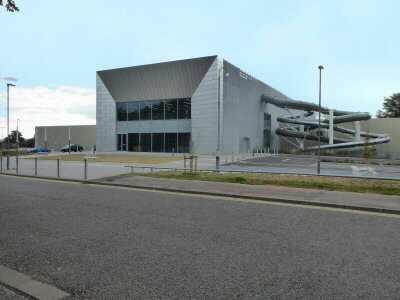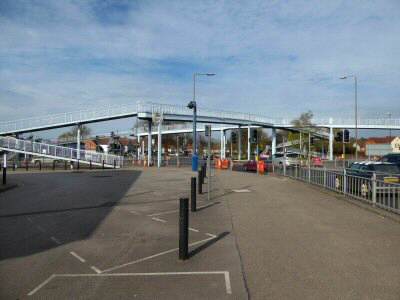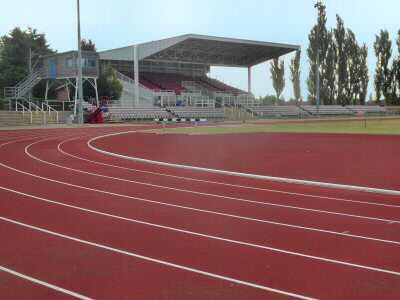ALLENTON
WITH SHELTON LOCK

ALLENTON INFORMATION
Where is it? – Allenton famous for its hippopotamus and spider island is about three miles south of the city centre. The main shopping centre is to the south of the Outer Ring Road.
What to do? – take a walk along the former Derby Canal at Shelton Lock. It was closed in the 1960s but there are plans to re-instate it – explore Allenton and visit the sculpture of the Hippo displayed in the shopping centre near where it was discovered. The hippo is also depicted on a road sign. At a later date visit Derby Museum and Art Gallery, where the well-preserved bones of the hippopotamus are displayed – take a look around the War Memorial Village with its impressive War Memorial and open space.
Where to eat? – there is a good selection of places to take refreshments, including a Starbucks Coffee shop that replaced the former Mitre Public House.
Other places to visit – Pickford’s House Museum, housed in a handsome Grade I listed building in Friar Gate. Built in 1769 by architect, Joseph Pickford for his occupation. It was opened as a museum in 1988 and delightfully recreates a scene of Georgian domestic life. With splendidly furnished rooms and fine costume displays. – Kedleston Hall is one of the best surviving examples anywhere of the work of Robert Adam. And is now in the hands of the National Trust. It is lavishly decorated with fine collections of paintings, furniture and sculptures. The marble hall has been described as ‘one of the most magnificent apartments of the 18th century in England. – Derby Cathedral’s interior has recently been restored and now looks glorious. Light and spacious inside, the iron screen by Robert Bakewell is an inspirational masterpiece. Across the road is the Cathedral Centre holds a collection of the cathedral’s treasures.
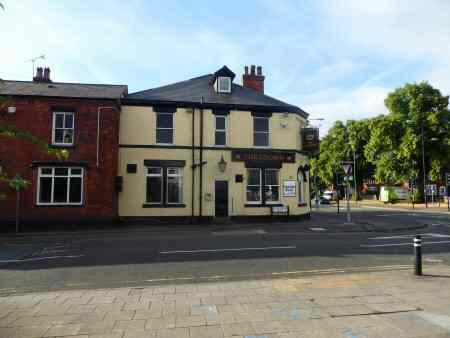
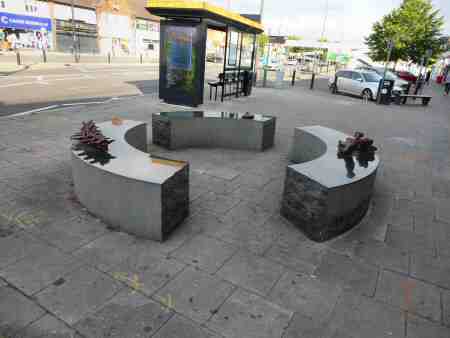
PROFILE
Allenton famous for its hippopotamus and spider island was originally a small village that sprang up as a speculative venture. When Isaac Allen purchased several acres of land on both sides of the Derby to Swarkestone Road and began to build. By 1903, 150 houses had been built as well as the Crown Hotel. In 1880 a school was opened on the corner of Allen Street and Poole Street. It was under the control of the Alvaston and Boulton School Board and for many years used on Sundays for church services. The area at that time went under the name of Allentown before losing the “w” at a later date. The 1928 Borough Extension Act enabled the County Borough of Derby to make a start on the Ring Road. This was the signal for large-scale housing development to begin. Today, both Allenton and its neighbour, Alvaston have busy shopping centres, with the former having a lively outdoor market on Fridays and Saturdays.

The War Memorial Village
Allenton’s War Memorial Village is on the south side of the suburb. A cluster of over 30 homes in an attractive setting, built after the end of the Second World War. With the special needs of its disabled occupants in mind. The first property was occupied in May 1950. Princess Elizabeth accompanied by the Duke of Edinburgh, laid the foundation stone before she became Queen. St Edmund’s Church on Sinfin Avenue faces the War Memorial Village. It was only built in 1939 which will probably come as a surprise to newcomers as it looks considerably older. Built of Mansfield stone in Gothic style, it is light and airy inside with excellent musical acoustics.
Allenton Spider Island
Spider Bridge’ or as it is more commonly called ‘Spider-Island’ is probably Allenton’s most important landmark as far as users of Derby Outer Ring Road and the Derby to Melbourne Road are concerned. Erected in 1971, it has ‘eight legs’ in four directions to enable pedestrians to cross the Ring Road safely. Each leg has a set of steps and a stepped ramp for wheelchair access. At the top, there is a good view of the surrounding area. Another familiar landmark, The Mitre Public House, which gave its name to the island beneath the bridge was demolished in 2020.
Allenton Hippo
In 1895 when work was being undertaken, during the building of the Crown Hotel. The bones of a hippopotamus, with a few other bones belonging to a rhinoceros, an elephant and other animals were found. The hippopotamus bones were well preserved and are exhibited in Derby Museum and Art Gallery. The skeleton is 3 metres (9.8 ft) in length. A sculpture of the Hippo is displayed in the shopping centre near where it was discovered. The hippo is also depicted on a road sign.

Shelton Lock Trail
Shelton Lock is a small suburb south of Derby City Centre, located between Chellaston and Allenton. It got part of its name from a local landowner, Joseph Shelton. He built a wharf to the west of Chellaston Road Bridge. This became known as ‘Shelton’s Wharf’ and on the eastern side of the road stood Fullen’s Lock and lock-keepers cottage. The canal was closed in the 1960s and has been filled in and a path created for walkers and cyclists. All that remains are the bridge and lock stones. There are plans to restore the canal.
Moorways Water Park
The prestigious new water park and leisure centre is the home of a 50m swimming pool. This can be split into three 25m length pools of varying depths, using moveable floors and booms. Thus, offering flexibility for club and leisure use. There are also three flumes and slides in the leisure pool. As well as a Wow Ball, to create waves in the leisure pool. In addition, there are also two soft play facilities, a state-of-the-art gym, group fitness studios as well as a sauna and a steam room. The combined Water Park and Stadium facilities are referred to as Moorways Sports Village and Water Park. They will undoubtedly create massive interest not only in Derby but also further afield in future years.
Moorways Athletics Stadium
Moorways Stadium provides a home for athletics and other sporting facilities. These include an eight-lane, 400m floodlit athletics track with a 1,000-seater grandstand. There are also several football pitches available for hire, including two full-size grass pitches. As well as all-weather pitches that can be used for eleven and five-a-side matches and training sessions. The Athletics Stadium has been awarded TrackMark accreditation as being amongst the best managed in the country. This gives it the status to hold national competitions as well as local and regional.
